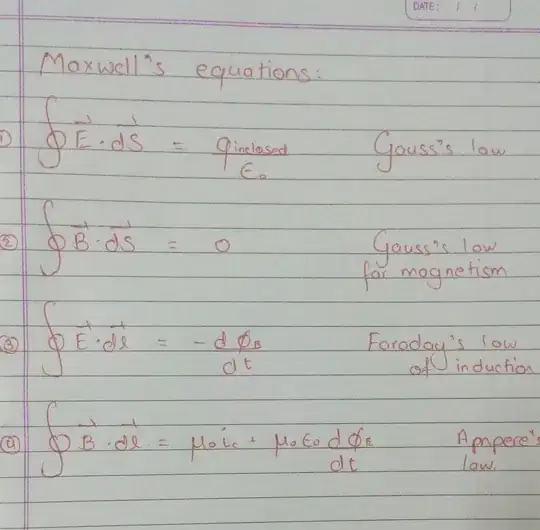I am a $12^{th}$ class student in India. I am quite new to these interesting concepts. And, I think I've learnt about electrostatics, magnetism, Maxwell's equations very thoroughly. But, my books doesn't convey satisfactory information about how $c$ is calculated. It just simply that: using Maxwell's equations, $c=\frac{1}{\sqrt{\mu\epsilon}}$.
Also, I've been reading many questions asked about light and photons on this site, stating even the electric wave and magnetic wave are out of phase (which sometimes seems obvious to me), but I lack systemetic resources to learn about them.
I just need some help like how the velocity was calculated or even some resources.
Probably, this part is more opinion based but can someone please also suggest some good resources to learn these things (free). I heavily rely on sites Khanacademy
[Clarification after two answers used the differential form of Maxwell’s equations:]
The main problem is the equations taught to me are different which I find elsewhere:

A nice answer to this question thnx to @Elio Fabri